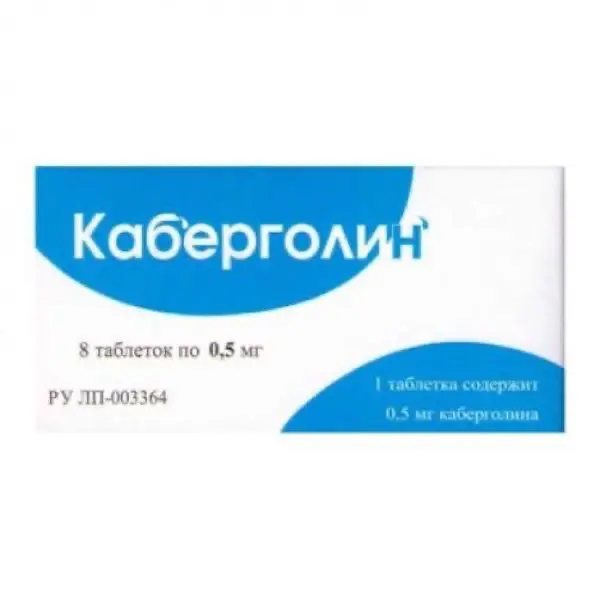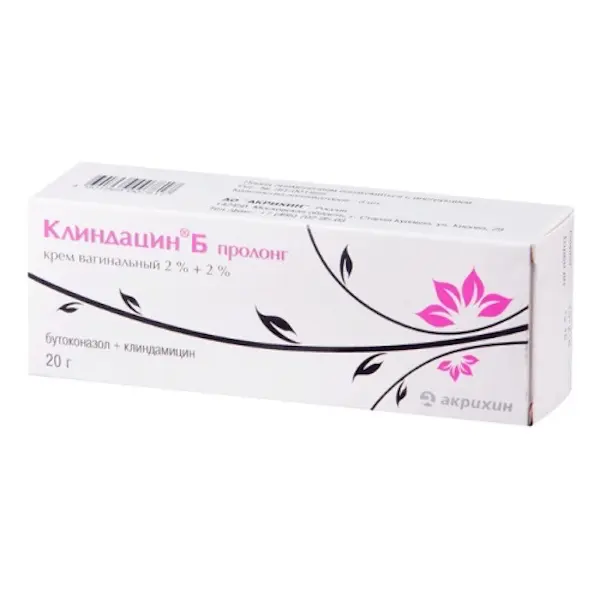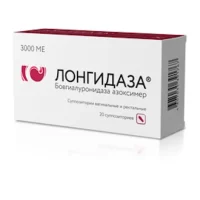Description
Cabergoline Pharmacodynamics
Cabergoline is a dopaminergic derivative of ergoline and is characterized by a pronounced and long-lasting prolactin-lowering effect, caused by direct stimulation of D2-dopamine receptors on lactotropic cells of the pituitary. In addition, when administered at higher doses compared to doses to reduce plasma prolactin concentrations, cabergoline has a central dopaminergic effect due to stimulation of D2 receptors.
Decrease in plasma concentration of prolactin is noted within 3 hours after drug administration and lasts for 7-28 days in healthy volunteers and patients with hyperprolactinemia, and up to 14-21 days – in women in the postpartum period.
Cabergoline has a highly selective effect and does not affect basal secretion of other pituitary hormones and cortisol. The prolactin-lowering effect of the drug is dose-dependent, both in terms of severity and duration of action.
The pharmacodynamic effects of cabergoline, which are not related to the therapeutic effect, include only a decrease in blood pressure (BP). When taking the drug once, the maximum hypotensive effect is observed during the first 6 hours and is dose-dependent.
Indications
Prevention of physiological lactation after childbirth;
Suppression of already established postpartum lactation;
Treatment of disorders associated with hyperprolactinemia, including amenorrhea, oligomenorrhea, anovulation, galactorrhea;
Prolactinsecreting pituitary adenomas (micro- and macroprolactinomas); idiopathic hyperprolactinemia; empty saddle syndrome combined with hyperprolactinemia.
Contraindications
Hypersensitivity to cabergolip or other components of the drug, as well as any ergot alkaloids.
-Heart and respiratory dysfunction “due to fibrotic changes in the lungs, pericardium, heart valves or
In long-term therapy: -In the presence of a history of such conditions.
-In long-term therapy: anatomical signs of pathology of the valve apparatus of the heart (such as, thickening of the valve leaflet, narrowing of the valve lumen,
mixed pathology of valve narrowing and stenosis) confirmed by an echocardiographic study (EchoCG) performed at the start of therapy.
-Risk of postpartum psychosis.
-Breastfeeding period.
-Children under 16 years of age (safety and efficacy of the drug have not been established).
-Lactose intolerance, lactase deficiency, glucose-galactose malabsorption.
Dosage and administration.
- Orally, with meals.
- Prevention of lactation: 1 mg once (2 tablets of 0.5 mg), during the first 24 hours after delivery.
- Suppression of established lactation: 0.25 mg (1/2 tablet) 2 times a day every 12 hours for
for two days (total dose of 1 mg). In order to reduce the risk of orthostatic hypotension in breastfeeding mothers,
a single dose of cabergoline should not exceed 0.25 mg.
Treatment of disorders associated with hyperprolactinemia: Recommended starting dose is 0.5 mg per week
in a single dose (1 0.5 mg tablet) or in two doses (1/2 0.5 mg tablet, e.g., on Monday and Thursday). - The weekly dose should be increased gradually – by 0.5 mg – at monthly intervals until optimal therapeutic effect is achieved.
- The therapeutic dose is usually 1 mg per week, but may range from 0.25 to 2 mg per week.
- The maximum dose for patients with hyperprolactinemia should not exceed 4.5 mg per week.
- Depending on tolerance, the weekly dose may be taken once or divided into two or more doses per week.
- Dividing the weekly dose into several doses is recommended when prescribing a dose of more than 1 mg per week.
- In patients with hypersensitivity to dopaminergic drugs, the likelihood of side effects can be reduced,
by starting therapy with cabergoline at a lower dose (e.g. 0.25 mg once a week),
and then gradually increasing it until a therapeutic dose is reached.
To improve tolerability of the drug in case of pronounced side effects, a temporary dose reduction is possible,
with subsequent gradual increase (e.g., increase by 0.25 mg per week every two weeks). - Patients with hepatic and renal dysfunction
See “Contraindications” and “Cautionary Note”. - Elderly patients
Given the indications for use, experience with the use of cabergoline in elderly patients is limited. - The available data indicate that there is no specific risk.





